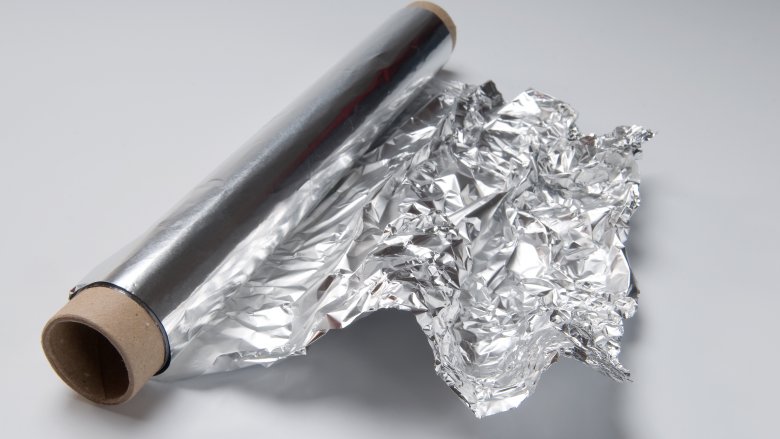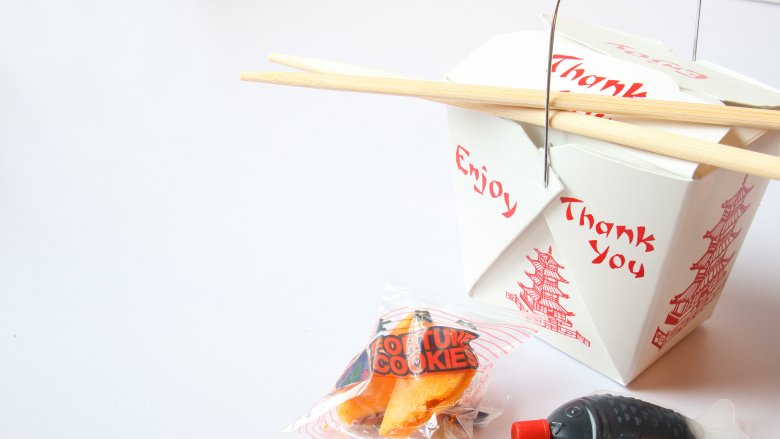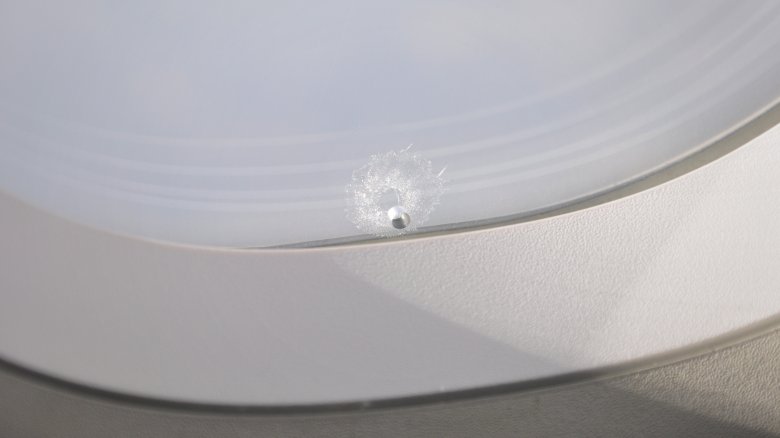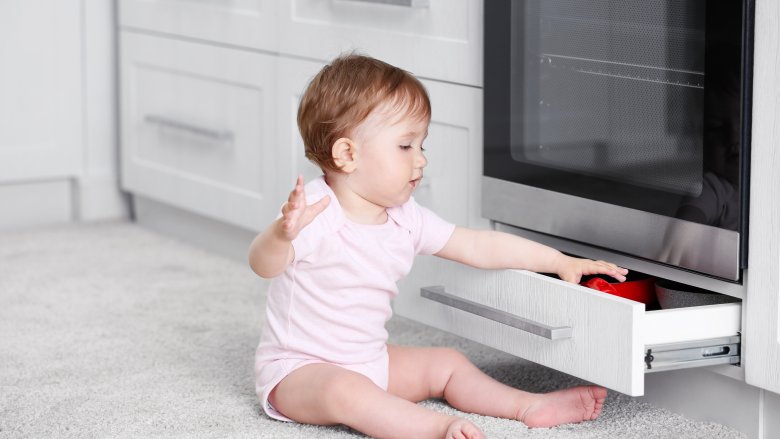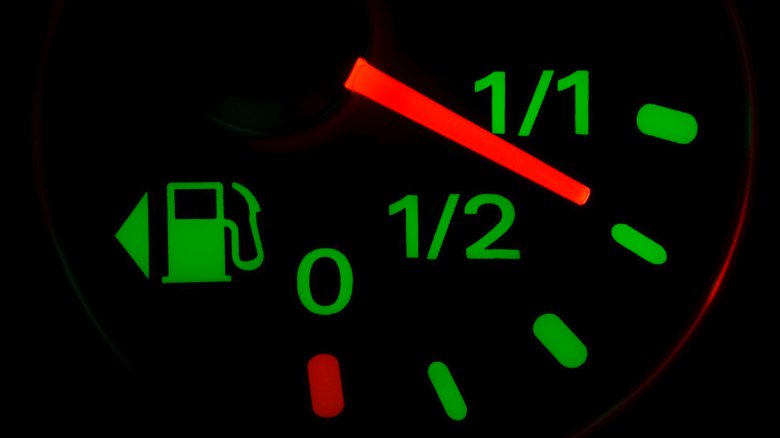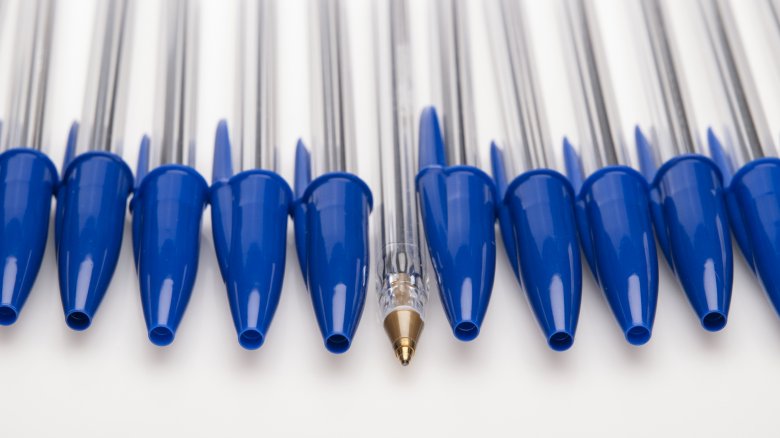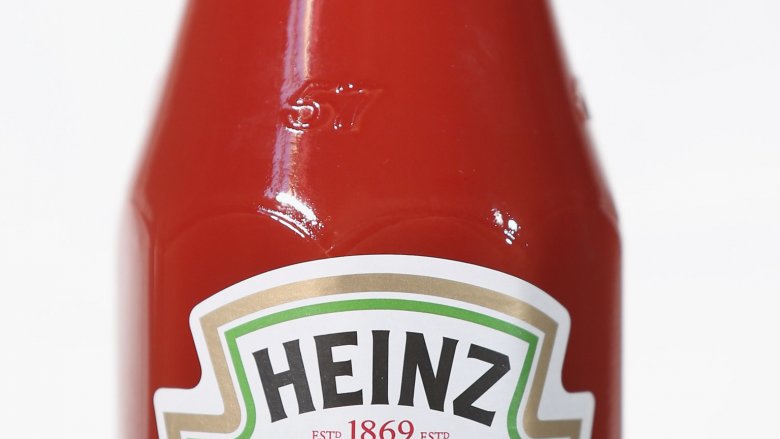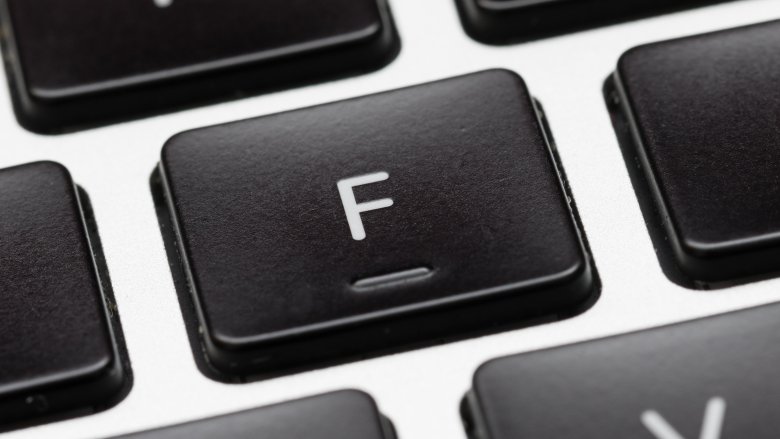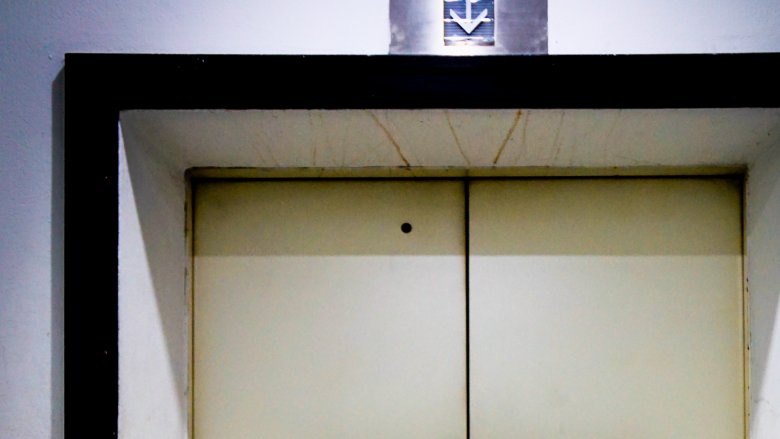Everyday Things You Never Knew The Purpose Of
Sometimes, moments come along where you realize what a bunch of hilarious doofuses human beings really are. Between dropping cell phones into the toilet, eating processed sugar, or wasting hours on an argument about who put dishes in the sink, humans are amusingly unobservant. If alien life is out there, you can bet two bars of gold-pressed latinum that they watch wacky reality show sitcoms about us.
Considering humanity's hardwired ridiculousness, it's unsurprising that even mankind's own inventions are widely misunderstood. Not just satellites or 3-D printers, either. Everyday items from pen caps to pockets get totally misinterpreted. All those little holes, ridges, and drawers are there for a reason, not just because the designer shares Michael Bay's fascination with insanely complex designs.
The little tabs on the ends of aluminum foil boxes
Ask any college kid — or family of five — and they'll tell you how great both aluminum foil and plastic wrap are. Don't feel like finishing that plate of spaghetti? Don't worry about it, just wrap 'er up. Cooking baked potatoes for dinner? Wrap the potatoes in aluminum, pop them in the oven, and enjoy the magnificent results. Need to keep the bread fresh? Plastic wrap to the rescue!
But you know what really sucks? The box. Every time you try to pull out some aluminum or plastic, the roll tumbles out. It's like wrestling with a mischievous gnome that's trying to lunge out of its little house. Except it's not supposed to fall out. Shockingly enough, the box is designed to be your hero, not your nemesis, and most people don't even notice.
Go ahead and grab a box of aluminum or plastic wrap, then look at the sides. Notice two little perforated tabs? Weird how they never seemed to be there before, right? According to Slate, they're called "end locks," and they're about to save you countless hours of animalistic rage. All you have to do is push the tabs in, and they'll lock right into the roll, holding it in place. Voila!
Don't share the news too loudly, though. People already acquainted with end locks typically respond to your excitement with obnoxious satisfaction, and cheerfully chuckle out a "What, you really didn't know about those?" Smug know-it-alls, the lot of 'em.
Chinese takeout boxes are supposed to be plates
Despite their name, Chinese takeout boxes are an American icon. They could easily have Uncle Sam's grizzled face printed on them. As described by the New York Times, these boxes were invented in Chicago by Frederick Weeks Wilcox, patented in 1894, and now pour out of thousands of U.S. restaurants every day. Everyone knows them. Everyone loves them, particularly Mrs. Doubtfire. But yeah, sorry, those takeout boxes with the cool red lettering have nothing to do with China.
An ever bigger shock: No one uses these boxes correctly. Oops.
Check the original patent, available on Google. Wilcox didn't realize his boxes would become a faux-Eastern symbol, so he called his origami-inspired invention the "paper pail." It's a box folded up from a single piece of paper, which then unfolds into a plate for easier eating.
Pick those jaws up off the floor. Yes, it seems these innocent little boxes were the first Transformers, hiding in plain sight as they waged their battle to destroy the evil forces of the Decepticon doggy bags. Motives aside, today's lesson is that Chinese takeout containers are the most efficient storage devices ever. When you bring the box home, you don't need to scoop any fried rice out: You can microwave it, then unfold the box into a nice, simple, stress-free paper plate. When you're done, fold the box back up for easy refrigerator storage. No dishes, no mess. That Wilcox was one smart guy.
The little hole in an airplane window
Experienced travelers looking for a belly laugh should try taking someone up on an airplane for the first time. A newbie's virgin flight is something to behold. Those innocent first-time flyers are haunted by visions of Lost, so they get excited — or utterly terrified — by all the things that oldies take for granted. Between the weird feeling in their ears and the discovery of the joys of turbulence, the laughs never stop.
One mystery that stumps even experienced flyers is that weird little hole at the base of every window. Though the hole presents another easy prank to play on a newbie, it's actually there to keep you safe.
According to Business Insider, it's called a bleed hole, and it regulates air pressure. The air pressure changes drastically when you go up in a plane — hello, popped ears — so the cabin is filled with conditioned air. As the plane shoots up into the sky, the less oxygenated outside air thins while the air inside stays comfortably pressurized.
Airplane windows have three panes. As the pressurized air inside the plane fights to get out, the hole reduces pressure on the middle pane. That middle pane is important, because if the outer pane shatters, then the middle pane is the only protection from both air pressure and that creepy airplane monster from The Twilight Zone. The bleed hole also releases moisture, preventing the windows from fogging up. Whew.
The drawer beneath the oven
Baking pans are big hard sheets of metal, perfectly designed to whack home invaders in the head. But where do they go when you're not using them as a weapon? Dishes fit in a cabinet, and silverware fits in a drawer. Baking pans would be a major storage headache — to complement the headache you gave that burglar, natch — but because all ovens have a drawer tucked beneath them, we tend to just throw these vicious WMDs right in there. It'd be nice if the drawer did something else, but it's just a storage drawer. Right?
Wrong. On many oven models, this is designed to be a warming drawer, and it's the hidden miracle we've been waiting for all this time.
General Electric itself will be happy to give advice. Basically, the warming drawer is designed to keep your pies, cookies, and lasagna warm and toasty, but only after you cook them. Food writer Erika Owen suggests it's the perfect solution for late dinner guests. Never having to worry about cold pie again? Yeah, sounds good.
But don't rush to pull out all those baking pans. The inclusion of a warming drawer varies depending on the oven model. Check down below first, and make sure that the warming drawer is part of the package. In the meantime, equip those baking pans with steel spikes, and allow them to be the true weapons they deserve to be.
The little arrow on the gas gauge
Getting back to that whole extraterrestrial reality sitcom thing, here is one doofy incident that those ETs probably cry with laughter about every time it happens.
You know which side of the car your gas tank is on. That's easy. But this predictable wallet-thumping annoyance occurs when you drive a rental or borrow a friend's car. You stop for gas, pull right up to the pump, get out of the car ... and then scream in frustration because the pump is on the wrong side. Those damned auto dealers! Couldn't they be considerate enough to put some sort of label signifying which side the pump is on?
Well, uh, yeah. They already do that. It's an arrow near the gas gauge, according to Slate. While many have gazed upon that arrow and wondered whether it was an Illuminati code or a joke by the manufacturer, it's there just to make your life easier. If it's pointing to the left, the gas tank is on the left side. ABC reports that although most drivers don't know about it, the arrow is now standard in all modern cars. This is one frustration we can officially leave in the past, and thank God because gas station attendants were starting to get tired of giving amateur therapy to irate customers.
The hole on the end of a pen's cap
Here's a weird one. Many souls have stared down into the dark hole carved within the center of those little plastic pen caps, wondering what answers might be contained within. What's the point of a hole in the cap, really? Are they trying to make the ink dry out faster, covertly forcing customers to buy more pens? Or maybe the pen company is just so friggin' cheap that they're trying to save fractions of pennies by leaving out that tiny bit of plastic?
Brush all those sinister conspiracy theories aside. According to Business Insider, the real reason these pens have a tiny hole in the cap is because BIC cares a lot about saving the lives of babies and small children. No, really. Get ready for BIC to join the Marvel Cinematic Universe.
The vent in the top of a pen cap is designed to allow air to pass through it, just in case Baby Bob decides to pop one in his mouth and swallow it. Anyone who has ever been around a baby long enough knows that picking up weird objects on the floor and trying to eat them is a standard MO, so it's nice that pen companies took that into consideration. It's also a friendly high-five to all those adults out there who chew their pen caps, whether due to cigarette cravings or an affection for the taste of plastic. If you folks ever accidentally choke one down, you're covered.
The hole on the end of a tape measure's tape
By now, a trend is apparent: Most of these objects are full of holes. Window holes, pen cap holes, holes in boxes ... and now this? It all seems a bit too coincidental. Now, it's possible that the designers of all these everyday items were just big fans of Louis Sachar's young adult novel Holes, and they're trying to subtly brainwash everyone into reading it. But most likely, it's just that holes are a really effective design trick.
For example, according to AOL, even the friendly, unassuming tape measure has its own secret hole. Go ahead, pull it out of your toolbox and check out that little serrated piece of metal at the end of the tape. Sure enough, a hole reveals itself. Aesthetic choice, or yet another secret of the universe?
That's right. Once again, the hole has a function, as demonstrated by DIY expert Leah from See Jane Drill. It's intended to "grab" onto nails and screws, which is actually a crazy useful feature.
Doing mental math is hard enough, but when the tape measure slips, it can ruin the whole process. Now, thanks to the hole, slip-ups are no longer a concern. Just place the hole over a nail, lock it in place, and whip that tape back with no restraint. Seriously, it's like all these hole manufacturers thought of everything.
The extra little fifth pocket on your jeans
Everyone has encountered that dinky little "fifth" pocket on the front of a pair of jeans. You know, the one you can barely fit two fingers in. No one calls it the fifth pocket, though: They call it the stupid pocket, the useless pocket, the condom pocket, or maybe the I-always-lose-my-jewlery-in-this-darn-thing pocket. Many have wondered why jeans companies waste their time with this extra little strip of denim.
Well, according to Levi Strauss & Co. — which has been making jeans since Ulysses S. Grant was president and so is something of an authority on the matter — the fifth pocket is the "watch pocket." For those who were born anytime within the last century or so, the word "watch" probably conjures up images of a device strapped to a wrist, but according to our best time machines, men used to carry around loose pocket watches, oftentimes hanging from a chain. The fifth pocket provided a neat and tidy little place to store these delicate instruments.
These days, things like pocket watches, cigarette holders, and monocles are only owned by murderous Batman villains named Oswald Cobblepot. So yes, assuming you don't live in the 1800s and thus don't carry around a pocket watch anymore, you're more than welcome to instead store jewelry, condoms, or keys in the fifth pocket. Just not coins. Those always get lost in the laundry.
The '57' on a Heinz bottle
It's pretty weird how those classic Heinz ketchup bottles always have a 57 embossed on the glass, isn't it? Anyone who reads enough Stephen King knows that the number 19 is super suspicious, but what about 57? There is a practical-sounding urban legend that Heinz's "57 varieties" motif stands for the supposed 57 products they used to offer, but Snopes calls this story's bluff: 57 was just a random number that founder Henry Heinz thought would look nice on marketing. So yep, Heinz basically lied on its dating profile and waited until the morning after to fess up.
But what's actually cool about the 57 you see embossed on those glass bottles is that it has a real purpose. Even better, it's a specifically covert one, which marks the difference between a true ketchup fan and a pretender.
Trying to pour ketchup out of a glass bottle can sometimes be like playing chess against a Grandmaster. Salad Fingers may like it when the red water comes out, but he'd have a hard time making it happen with some bottles. The more impatient people resort to pounding the bottom of the bottle. Crafty innovators try to scrape it out with a knife, a technique that's ruined many white shirts over the years. But according to the official Heinz website, the embossed 57 is there to mark the bottle's "sweet spot." Heinz recommends applying a "firm tap" to the 57, and then letting the red stuff flow.
The bumps on the F and J keys
Bumps generally aren't a good sign, but on keyboards, they're there to help. People who spend a lot of time at their desks have probably noticed that keyboards always seem to have little bumps protruding from the F and the J keys. Why F and J? Clearly, these are there for a reason, but it's unlikely that every keyboard developer in the world is doing a subliminal advertisement for Toyota's FJ Cruiser.
First of all, the keyboards we're discussing are of the classic QWERTY layout, none of that funky AZERTY, Dvorak, or Colemak stuff, though those layouts all have their devoted fan bases. QWERTY is the standard keyboard layout, and by the 21st century, even those hunt-and-peckers have probably memorized at least a few of the keys. The bumps on the F and J keys can be found on almost any QWERTY keyboard, and they're placed there in order to help those ultra-fast touch typists spew words even faster, according to Business Insider.
The keyboard row that begins with ASDF is commonly referred to as the "home row," which happens to be the same row that has the conspicuous bumps. The F and J keys are where typists are supposed to place their index fingers, in order to achieve the optimum typing position. These bumps allow typists to swiftly find their way right back to the home row, thereby guaranteeing maximum typage glory.
The little dime-sized hole on elevator doors
Oh no, it's another hole! Sorry. In the end, it looks like everything just always comes back to holes. This time, it's that strange little perfect circle that appears on the outside of many elevator doors. It's no bigger than a dime. What could such a tiny hole possibly be used for? Somewhat alarmingly, it's actually a peephole, so maintenance workers can spy on people riding the elevator.
Kidding!
Jokes aside, Electrical Knowhow thoroughly explains that it's a keyhole called an escutcheon tube. These holes can often be found on the top and bottom floors, but sometimes on the other floors as well.
While a complicated name like "escutcheon tube" seems primed to be an interdimensional portal of some kind, the hole's more mundane true purpose is still pretty useful, according to Slate. The key that slots into the hole is usually kept on the premises of the building, and when used, it will cause the doors to open wide — whether the elevator itself is there or not. This is great for when some panicky elevator passengers get stuck between floors, but it's also useful for more routine stuff like maintenance, inspections, and cleaning.
Not everyone is a fan of the escutcheon tube, with some arguing that they're a safety risk and others just calling them ugly. Poor little holes.
